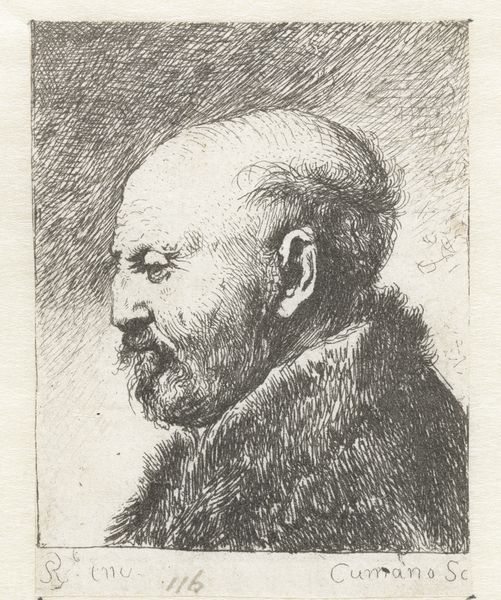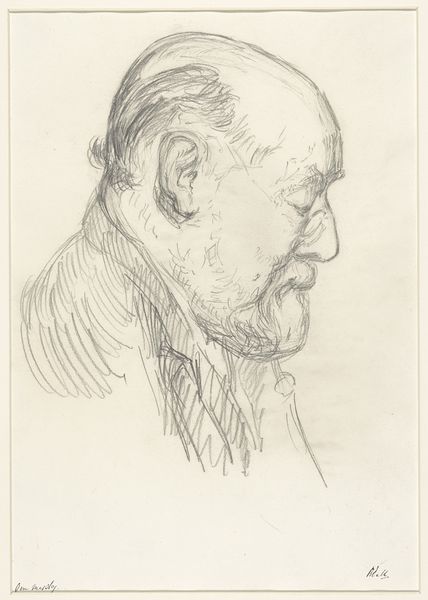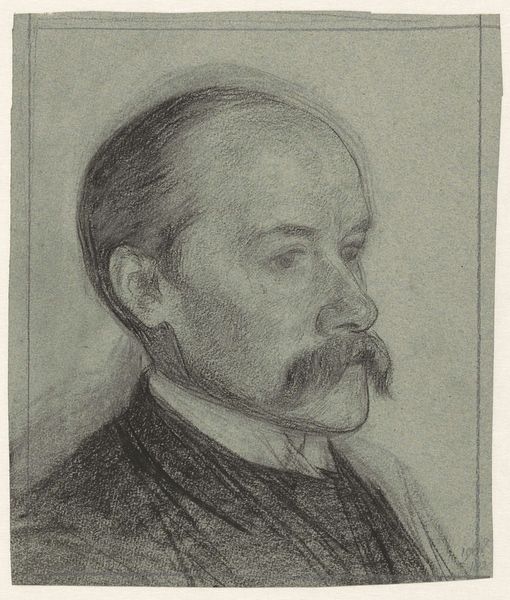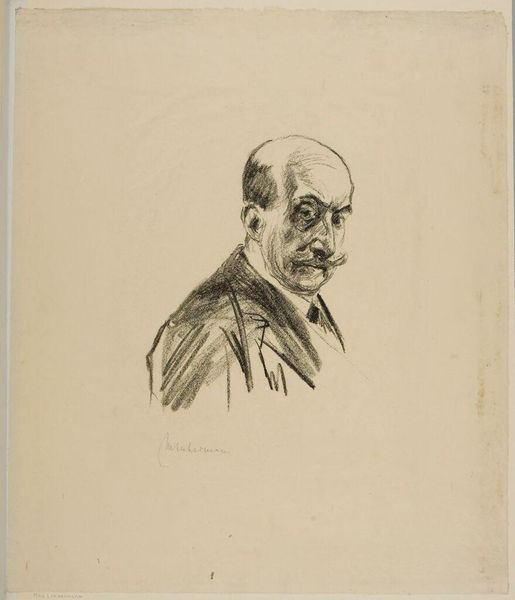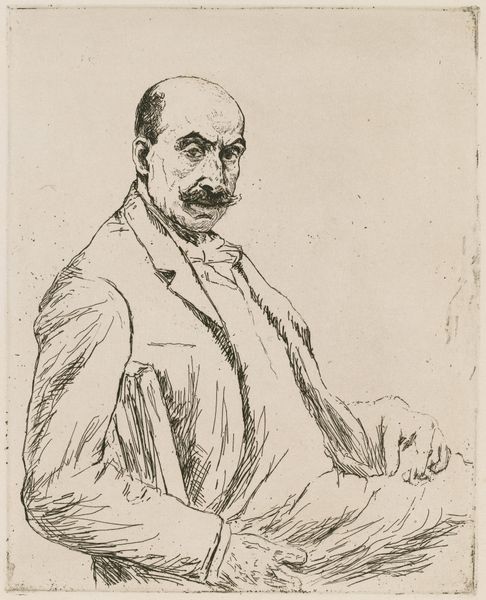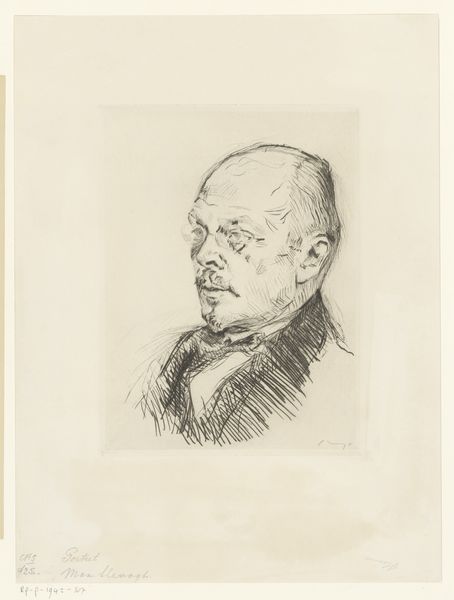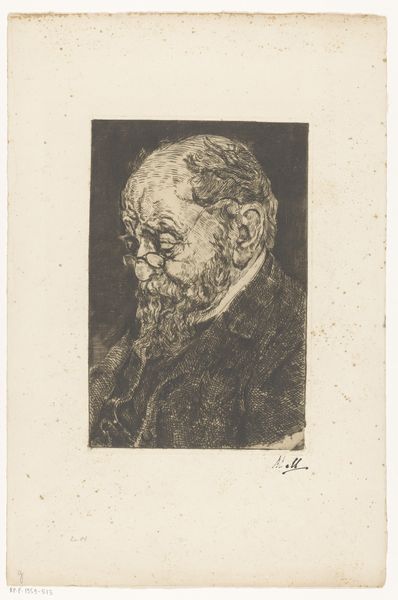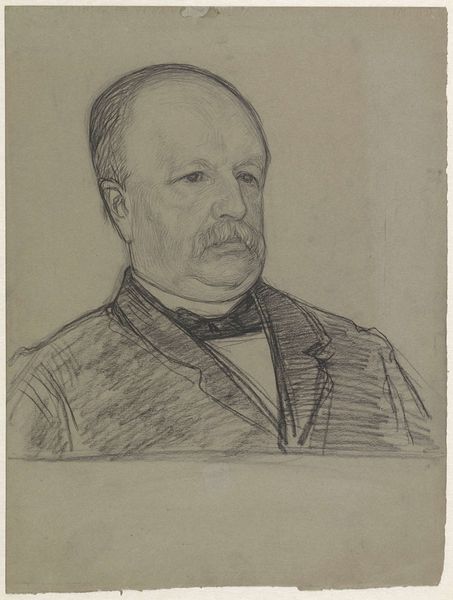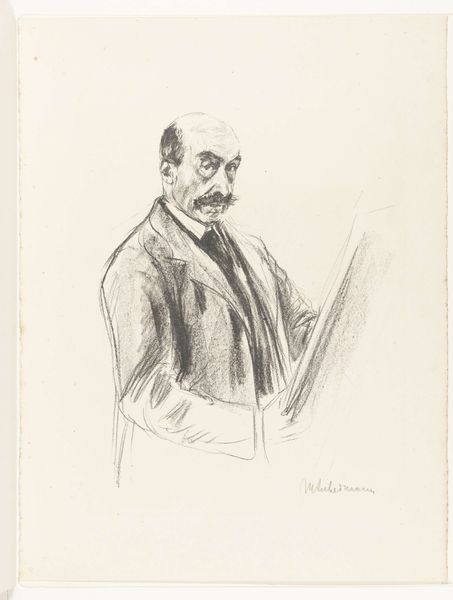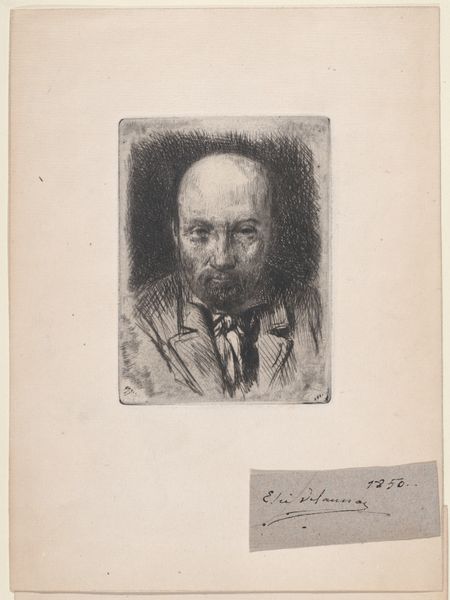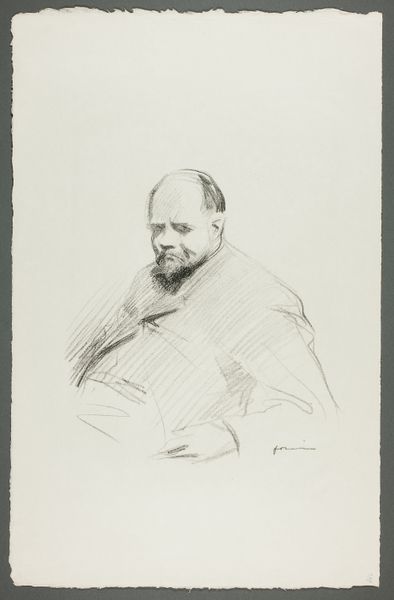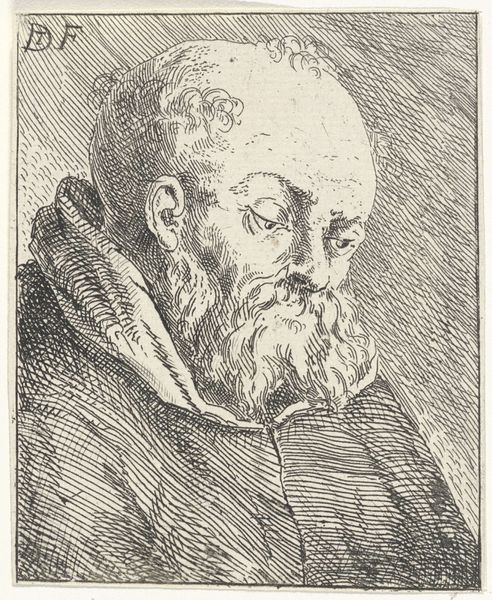
drawing, print, etching
#
portrait
#
drawing
#
baroque
#
dutch-golden-age
# print
#
etching
#
pencil drawing
#
portrait drawing
Dimensions: sheet: 6.7 x 5.7 cm (2 5/8 x 2 1/4 in.) cut to platemark
Copyright: National Gallery of Art: CC0 1.0
This is a small etching of a bald man in profile, possibly the artist's father, made by Rembrandt van Rijn in the Netherlands around 1630. During the Dutch Golden Age, artists like Rembrandt increasingly relied on the open art market, and portraiture became a lucrative genre. But, rather than idealizing his sitter according to the conventions of the time, Rembrandt here captures the fine lines and wrinkles of old age in great detail. The stark lighting and close cropping intensify the focus on his subject's humanity. Rembrandt was deeply interested in the expressive potential of printmaking. In this period, printmaking was a growing industry and offered artists like him a way to circulate their work widely and cheaply. In etching, the artist scratches a design into a metal plate, which is then inked and pressed onto paper. The result is an image with a unique texture and tonal range. To understand the art of Rembrandt and his contemporaries fully, we need to consider the changing social status of the artist at this time and how printmaking shaped artistic production. We can learn more about this through archival research and careful analysis of the works themselves.
Comments
No comments
Be the first to comment and join the conversation on the ultimate creative platform.
